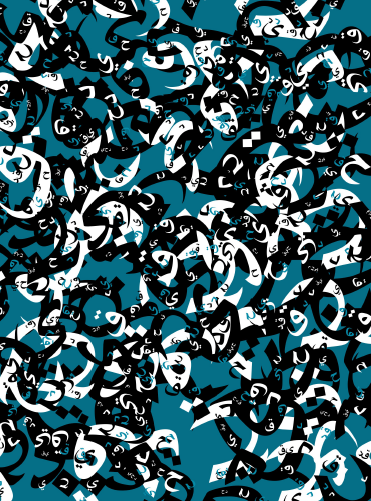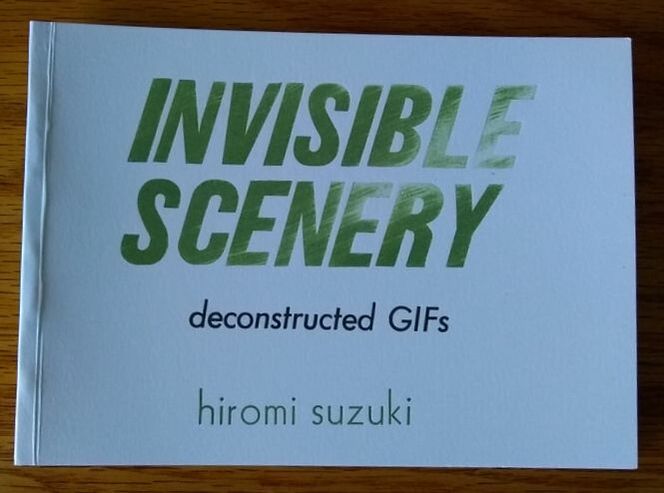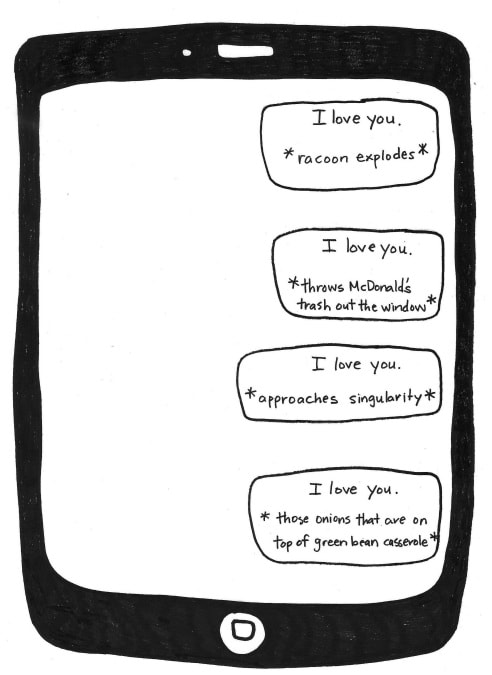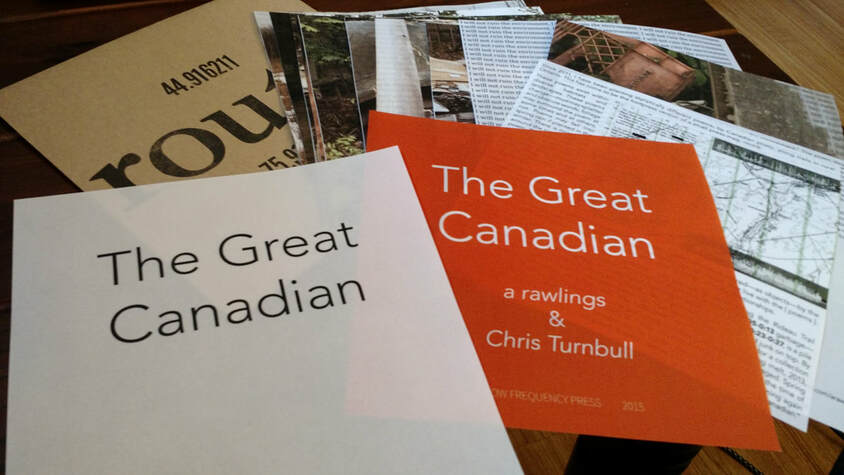CATALOG
Tonic
Michael Sikkema
In Tonic, Michael Sikkema offers a multimodal image-sound collage. The reader of this text walks two paths, braided. One track follows a series of Niedecker-esque documentations of hyper-local sounds: “11:00 train 3 minutes early”; “motor bike / runs the gears”; “great lake shhhissphssshh”; “low bacon rain.” The other treads on leaves of comic book and nature magazine scraps, assembled into onomatopoeiac collages in which the all-caps snarls, booms, and thups of superhero realms spring from mollusk shells, butterflies, groves of trees, and single leaves. The product of a meditative practice, Tonic makes for a nutritious intoxicant. Drink with us.
eyestake
Nico Vassilakis
from the preface by Gary Barwin
"I open the pages of this book. I think I see Nico Vassilakis ask: Tell me what you think you see? See you what you think me tell?
What do you think when you see what you think? What do you see? What is telling about the visual, the in-the-visual human being? How do we be in visual? How does thought see? What does it (be)fore)tell? What does the visual think? Can you see “tell,” “me,” “what,” “you,” “think,” “you” and “tell”?
How deep is the page? How far can the eye see, look in, look down, look through and sort with its retinal fingers, its iris behaviors, its eyestakes gamboling?"
"I open the pages of this book. I think I see Nico Vassilakis ask: Tell me what you think you see? See you what you think me tell?
What do you think when you see what you think? What do you see? What is telling about the visual, the in-the-visual human being? How do we be in visual? How does thought see? What does it (be)fore)tell? What does the visual think? Can you see “tell,” “me,” “what,” “you,” “think,” “you” and “tell”?
How deep is the page? How far can the eye see, look in, look down, look through and sort with its retinal fingers, its iris behaviors, its eyestakes gamboling?"
Undertones
Chris Turnbull and Bruno Neiva
a): First comes a number. One of them addresses it and sets the pace. The other follows suit. They take turns randomly and carry on. This goes on and on, for over a year, until they reach twenty-one and finally turn their attention to notepads.
b): The crease between each set of numbers, each piece, is a form of measure and hiatus. The numbers carry us forward. The pieces are unexpectedly in accord, are a bit unreal. Without summarizing, perhaps they hum in a sort of intercross of tangential, accrued perceptions harvested sensorily from daily and scattered appropriations. Marked treads.
Chris Turnbull's work can be found in print, online, and outdoors. She curates rout/e, a footpress whereby poems are planted on trails.
Bruno Neiva is a text artist and poet.
b): The crease between each set of numbers, each piece, is a form of measure and hiatus. The numbers carry us forward. The pieces are unexpectedly in accord, are a bit unreal. Without summarizing, perhaps they hum in a sort of intercross of tangential, accrued perceptions harvested sensorily from daily and scattered appropriations. Marked treads.
Chris Turnbull's work can be found in print, online, and outdoors. She curates rout/e, a footpress whereby poems are planted on trails.
Bruno Neiva is a text artist and poet.
Invisible Scenery: deconstructed GIFs
hiromi suzuki
hiromi suzuki’s Invisible Scenery: deconstructed GIFs is a series of poetry GIFs broken into their constituent images, printed, and hand-bound in a letter-pressed cover.
hiromi suzuki is a poet and artist living in Tokyo. She is a member of “gui” (run by members of the “VOU” group of poets, founded by the late Katsue Kitasono), and the author of Ms. Cried, 77 poems by hiromi suzuki, (kisaragi publishing, 2013) , and logbook (Hesterglock Press, 2018). Her works are published internationally in Otoliths, BlazeVOX, Empty Mirror, TAPE HISS zine, The Arsonist, Coldfront, and 3:AM Magazine. More work can be found at hiromisuzukimicrojournal.tumblr.com.
|
|
Everything But Sex
Sommer Browning
To our knowledge, no poetry-comic artist-writer has ever published a selection of works as a series of broadsides. So we did that, and called it Everything But Sex, featuring 20 pieces by Sommer Browning, who imagines philosophical concepts as foodstuffs, the life and times of single-celled reality television stars, and a “disciplinary loaf.” The 8″ x 10″ broadsides are collected in a letter-pressed envelope, designed and printed at the Western New York Book Arts Center. Everything But Sex gives you almost anything you could possibly want.
Some of Sommer Browning’s recent books are WANT TO HEAR ABOUT THIS DREAM I HAD (Reality Beach, 2016), The Circle Book (Cuneiform, 2015) and Backup Singers (Birds, LLC, 2014). She writes, draws, and is a librarian in Denver.
The Great Canadian
angela rawlings & Chris Turnbull
The Great Canadian is a medium-bending collaborative effort between poet a rawlings and photographer Chris Turnbull. With images from their collaboration for Turnbull’s ongoing, site-specific rout/e project and text from rawlings’ forthcoming echolology, as well as a q-code link to a recording of rawlings reading an excerpt of the text, The Great Canadian represents an intersection of multiple trajectories. The work dances one-sided on and beyond the margins of 23 unbound 7″x7″ sheets of translucent vellum, packaged in a letter-pressed brown-bag envelope.
THIS BOOK IS SOLD OUT
From Turnbull’s preface:
THIS BOOK IS SOLD OUT
From Turnbull’s preface:
- [ It ] offers a statement subject to its own ruination: “I will not ruin the environment.” The poem degrades over time: in written form, exposed to external conditions, as voiced utterance seeking and losing meaning and context, and as auditory experience, internalized or heard, temporary. a rawlings’ release of “The Great Canadian” for rout/e, the involvement of an unknown caretaker of the poem and trail, and the development and production of a chapbook with Michael Flatt & Low Frequency Press, charts extended, intriguing, and unforeseen collaborations. The chapbook combines an assortment of a rawlings’ page-based variants on her initial text (forthcoming in her manuscript-in-progress echolology) with sited visuals of “The Great Canadian.” [ Here ], “The Great Canadian” reforms as a transforming eyed-object predicated upon an unknown series of linguistic relationships and soundings (echolology). The chapbook is archival, the poem is vanishing from the site of the trail, echolology is emergent.
Proudly powered by Weebly










